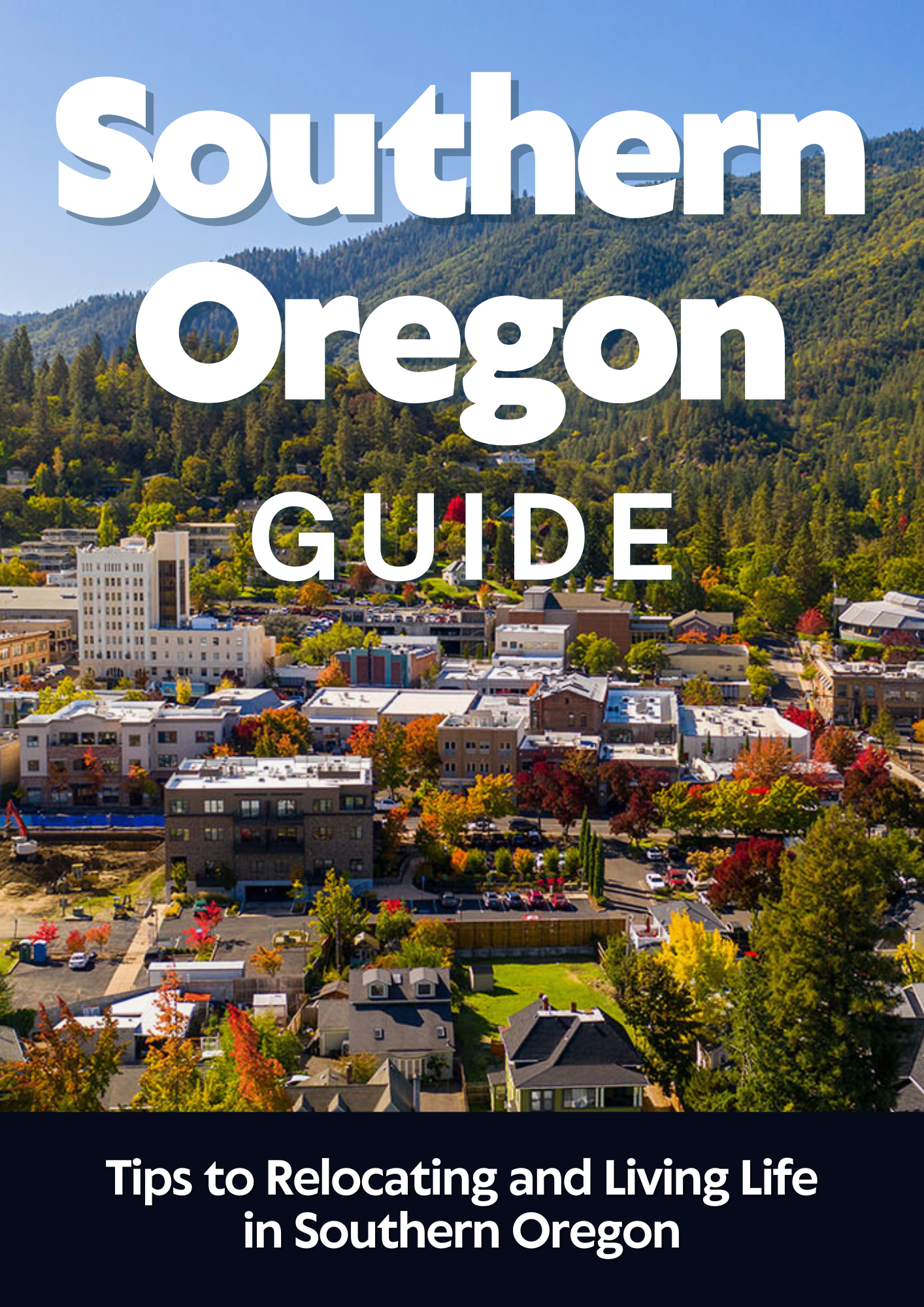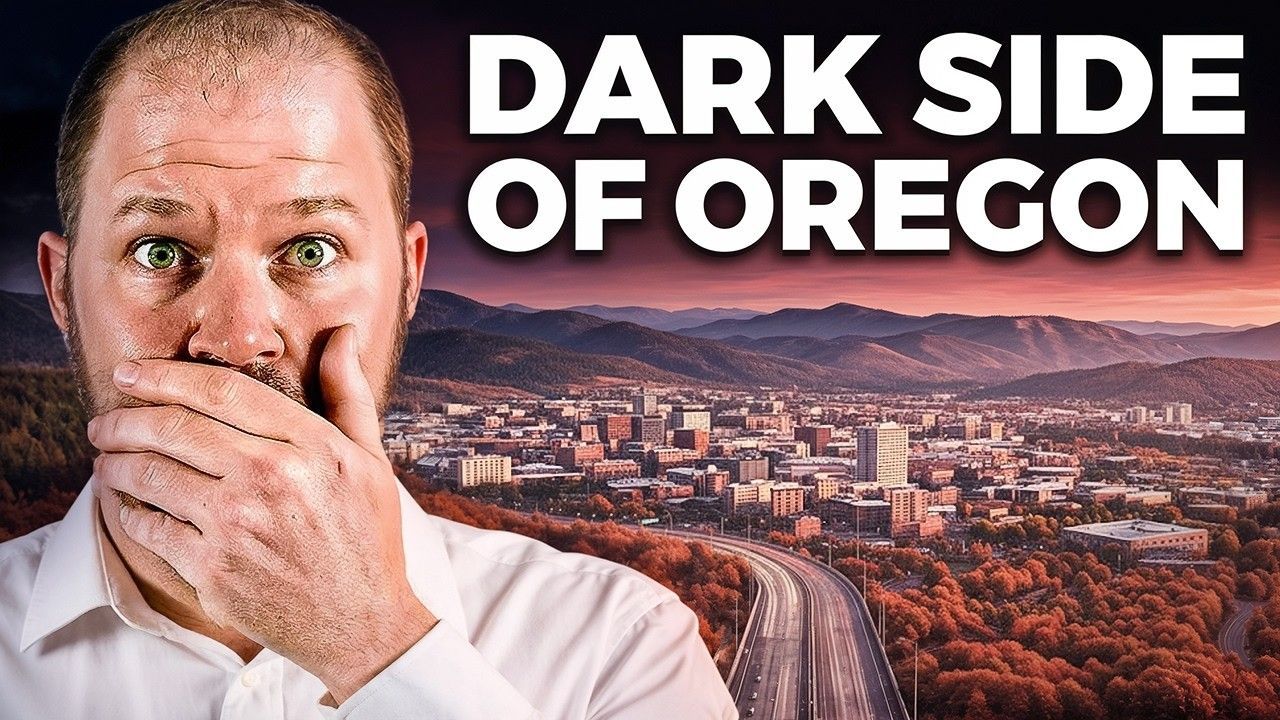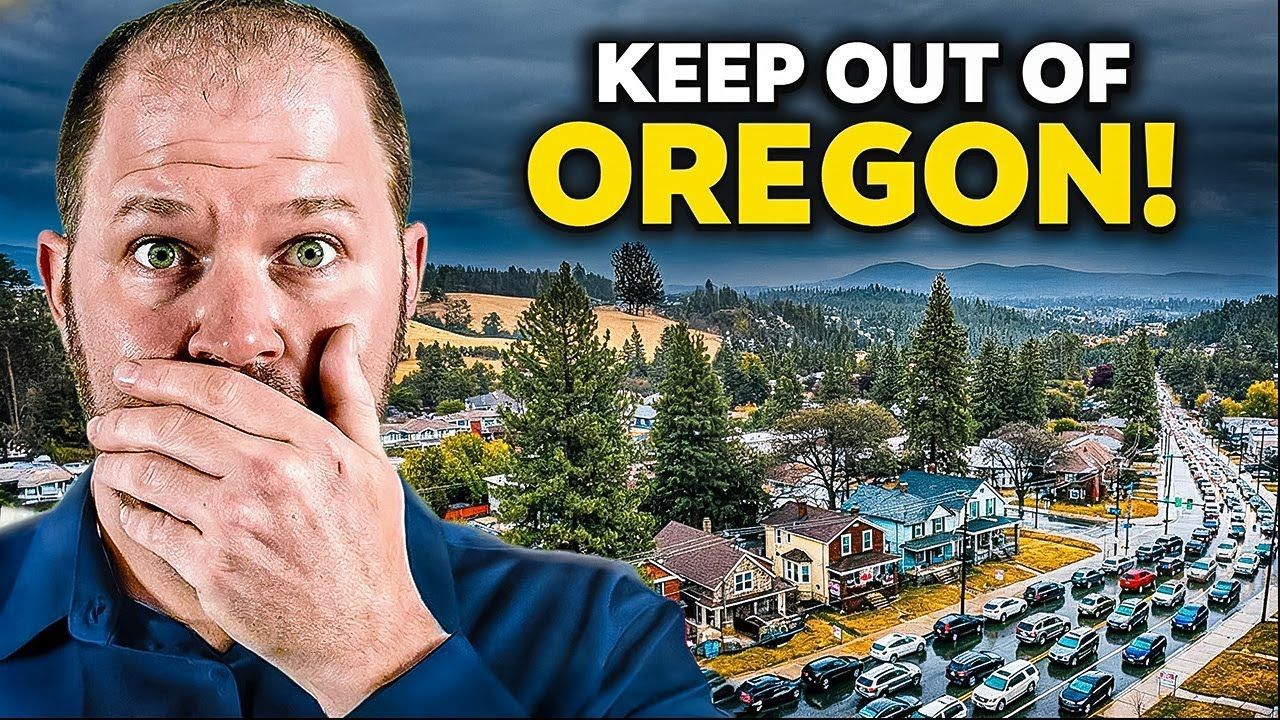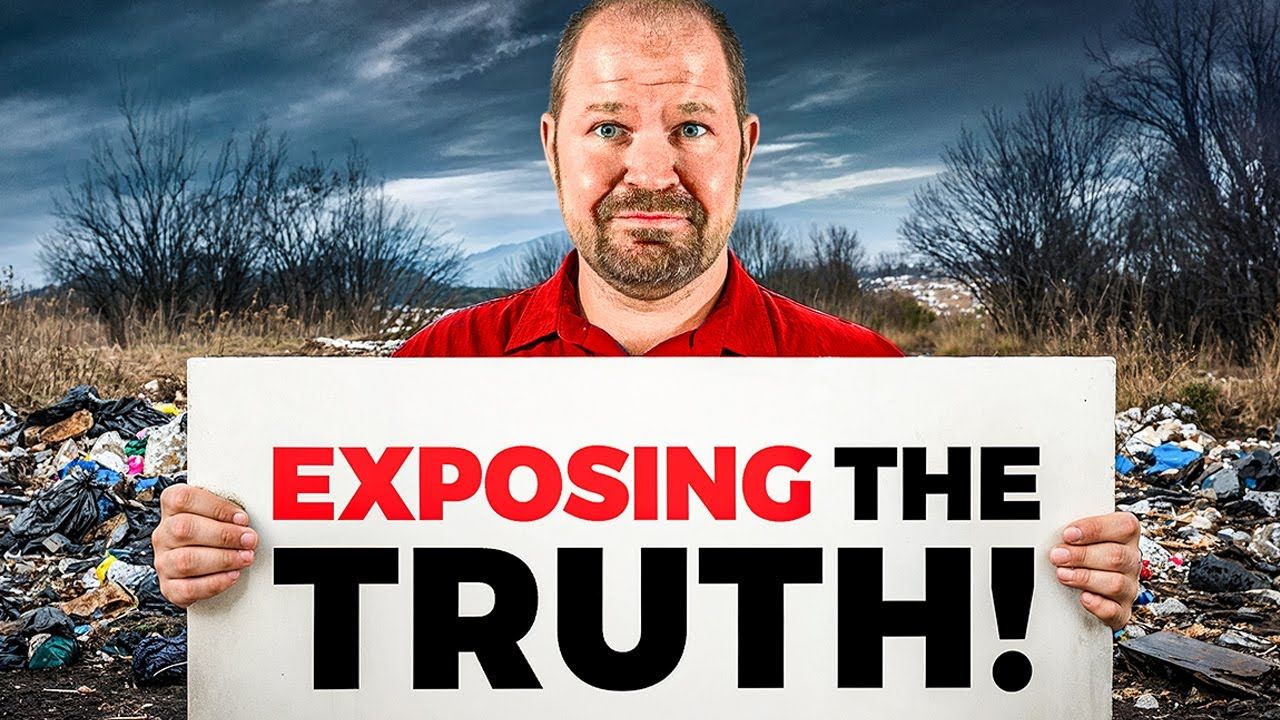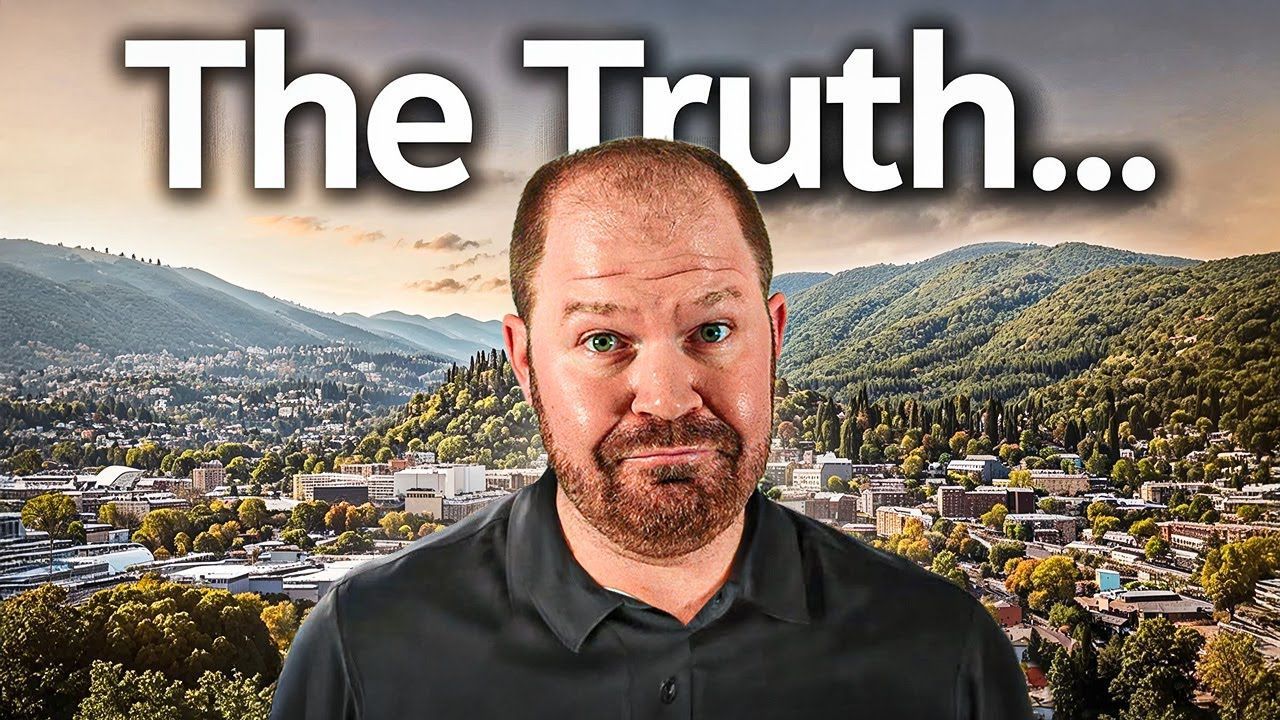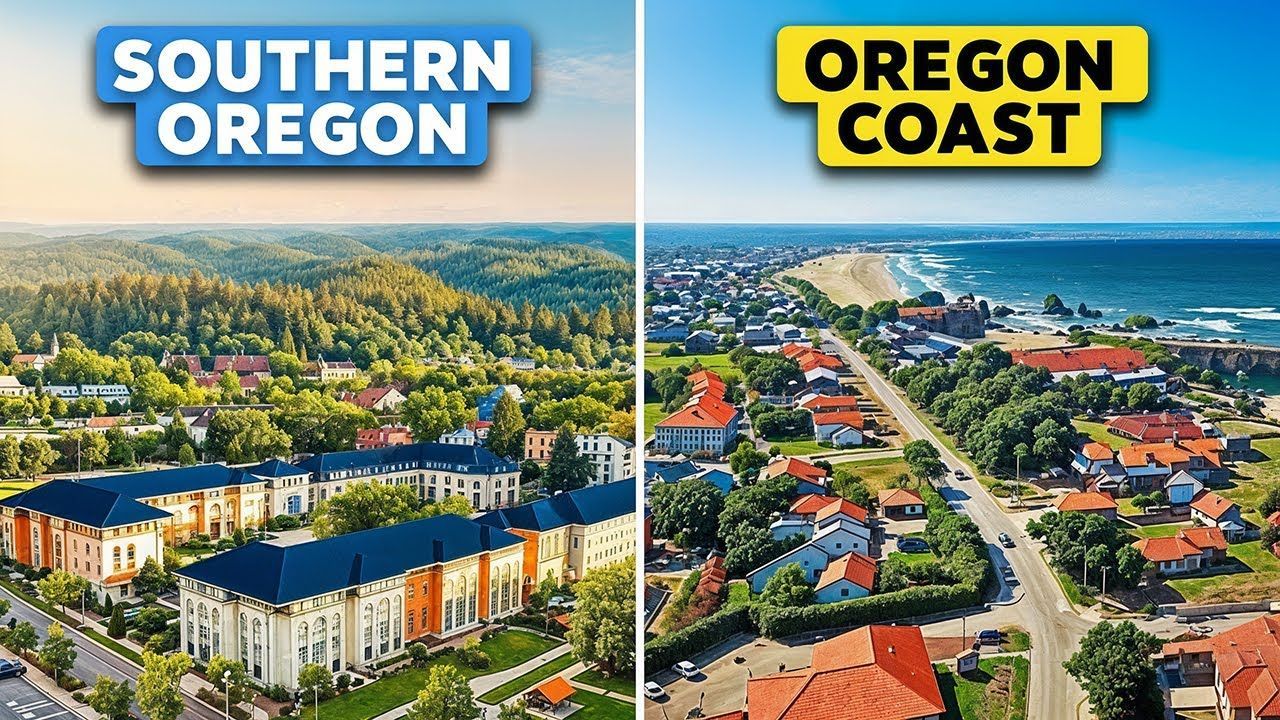Do NOT Buy Land in Southern Oregon Without Knowing This!
I'm Brian Simmons with Buying Southern Oregon, and if you're thinking about purchasing rural acreage, a city lot, or any parcel in our region, stop and read this first. In this article I walk you through the most important things to know before buying a land in Southern Oregon — the mistakes I see buyers make, the hidden costs that surprise people, and practical steps you can take to avoid expensive surprises. I filmed a walkthrough to explain these points, and below you'll find a written, expanded guide that covers zoning, water rights, utilities, easements, wildfire risk, timing, and the exact actions I recommend to protect your investment.
Table of Contents
- Intro
- The Dream of Buying Property and Building a Home
- Understanding Zoning and Land Use Regulations
- Importance of Water Rights and Irrigation
- Evaluating Property Improvements and Utilities
- Hidden Costs of Developing Property
- Protected Areas: Wetlands, Floodplains, and More
- Easements and Encroachments: What You Need to Know
- Internet Connection and Cell Phone Coverage
- Wildfire Danger and Insurance Considerations
- Timing and Costs of Building on Property
- Mitigating Risks and Conducting Surveys
- Working with an Experienced Real Estate Agent
- Final Practical Tips — A Short Checklist You Can Use
- FAQs About Things To Know Before Buying a Land in Southern Oregon
- Conclusion — Your Next Steps
Intro
Buying land can feel like the ultimate opportunity: find that perfect 10-acre lot for a bargain, design the exact house you want, and live your dream. But in reality, developing raw land is often complex, time-consuming, and expensive. Below I’ll share the full list of things to know before buying a land in Southern Oregon — based on real transactions, county rules, and lessons learned the hard way. My goal is simple: give you the knowledge to make an informed decision and reduce financial and emotional risk.
The Dream of Buying Property and Building a Home
Everyone loves the idea of buying a piece of land and building their dream home. It’s romantic: your vision, your layout, your finishes. The reality? There are many variables you must understand before you ever sign an offer. The less you know ahead of time, the more likely “the dream” becomes an expensive, defeating project. When preparing to purchase, it's essential to know the practical constraints and costs that come after the emotional high of finding the lot you love.

Understanding Zoning and Land Use Regulations
Zoning and land use regulations are the first and absolutely critical box to check. Counties and municipal governments set zoning rules that determine what you can and cannot build, where you can build it, and what activities are allowed on the property.
Key questions to ask:
- What is the zoning designation for the parcel? (Rural residential, agricultural, forest resource, etc.)
- Does the zoning allow a primary residence? Some agricultural or forest resource zones prohibit homes or require special permits.
- Are there minimum lot sizes, setback requirements, or restrictions on accessory structures and livestock?
- Is the property inside city limits, an unincorporated county area, or under a special district?
Knowing the zoning will immediately tell you whether your plans are possible. If your intent is to build a house, confirm that zoning allows a dwelling — otherwise you could buy a parcel that legally cannot host the home you pictured.
things to know before buying a land in Southern Oregon: zoning is non-negotiable. Don’t assume a piece of land is “buildable.” Confirm it in writing with planning staff or a qualified land-use professional.
Importance of Water Rights and Irrigation
Water can make or break a rural property plan. In Southern Oregon — and across many western states — water rights are complex. A private well does not always equal unlimited irrigation. State law, water district rules, and historical rights determine what you can use water for, and how much.
Points you need to verify:
- Does the property have an existing well? Are there logs or records showing well depth, yield, and water quality?
- What are the legal water rights attached to the parcel? Surface water, groundwater, and irrigation rights may differ.
- Are there limits on irrigated acreage? In Oregon, for example, there are restrictions without proper irrigation rights — you might only be able to irrigate up to a small area without separate rights.
- Do you need a water right transfer, permit, or to join a local water district?
Many buyers assume the neighbor’s functioning well guarantees theirs will behave the same. That’s not always true. Drilling a well can be inexpensive or extremely costly depending on geology — you might hit bedrock at 100–300 feet or find a shallow aquifer. Always budget for variability and ask for documentation.
things to know before buying a land in Southern Oregon: water rights are a legal and practical hurdle that you must investigate before purchasing, especially on larger rural parcels intended for agriculture, pasture, or large gardens.
Evaluating Property Improvements and Utilities
Vacant land can range from fully serviced lots with power, sewer, and a building pad to raw parcels with no infrastructure. The cost differences between these extremes are massive.
Checklist for improvements and utility readiness:
- Is there power to the property? If not, what is the distance to the nearest pole and who pays for line extension?
- Is there an existing well and septic system? If a septic exists, get the system approval documents and soil report.
- Is there road access and a legal right-of-way? Is the access road maintained by the county, a homeowners association, or a private group?
- Has a building pad been graded, or will you need major earthwork?
Practical advice: if you find a property with a manufactured home or an old house already on it, that often indicates the presence of utilities (well, septic, power). Those properties can be an easier way into rural living — you can renovate or replace the existing structure and avoid the immediate cost and risk of drilling wells or creating septic systems.

things to know before buying a land in Southern Oregon: factor in the cost to bring utilities and services to the lot. Wells, septic systems, and electrical extensions can individually climb into the tens of thousands of dollars depending on conditions.
Hidden Costs of Developing Property
Hidden fees are the silent budget destroyers of any land development project. Even if your construction estimate seems reasonable, local fees can add a surprising amount before you ever break ground.
Typical hidden costs include:
- Permitting fees: county or city building permits, inspections, plan reviews.
- Tap fees and connection charges: sewer, water, and storm drain connections may require one-time charges.
- Deferred development costs: if prior owners didn’t complete street, sidewalk, or curb improvements, the city may require you to pay or perform them before issuing permits.
- Impact fees: some jurisdictions charge fees intended to offset the cost of adding new residents to roads, parks, and schools.
- Engineering studies, soils reports, environmental surveys (wetland delineation), and traffic studies.
Example: contractors and friends often quote a construction price for labor and materials, but municipal fees can add $10,000–$30,000 or more. Tap fees for sewer/water can be several thousand dollars per connection, depending on jurisdiction. If you overlook these costs, your project rapidly exceeds budget.
things to know before buying a land in Southern Oregon: build a contingency into your budget for hidden municipal and site-development costs and call the local planning department early to get fee estimates.
Protected Areas: Wetlands, Floodplains, and More
Protected areas like wetlands, riparian corridors, and floodplains can restrict building locations or prohibit development altogether. These environmental constraints are a legal reality, and they are enforced through permitting and regulatory review.
What to check:
- Is any part of the parcel designated as wetland or within a mapped floodplain?
- Are there riparian setbacks along streams or seasonal waterways that limit buildable areas?
- Do federal, state, or local environmental protections apply (for example, Endangered Species habitat or forest resource restrictions)?
Perform or commission an environmental assessment if there’s any chance your build site is near a creek, marshy area, or seasonally wet zone. Wetland delineations and FEMA flood maps are available publicly, but it’s wise to have a professional confirm interpretations, especially when development plans are at stake.
things to know before buying a land in Southern Oregon: environmental constraints are not just annoyances — they can remove large portions of a parcel from the buildable area and add expensive mitigation requirements.
Easements and Encroachments: What You Need to Know
Easements and encroachments frequently cause disputes that are expensive to resolve. An easement grants use of a portion of property to someone else (for utilities, access road, pipelines, etc.), and encroachments are physical intrusions across the boundary line (a shed, fence, or structure built over the line).
How to protect yourself:
- Order a professional survey to establish legal boundaries and identify recorded easements.
- Obtain a title report and read all recorded easements and encumbrances carefully.
- Look for signs of encroachment: neighbors’ structures that seem close to or over your property line. If present, ask for a boundary survey and resolution in writing.
I’ve personally dealt with deed discrepancies where my deed said one thing and the neighbor’s deed said another. Resolving those disputes can cost thousands in legal and survey fees and often requires a boundary line agreement or court action. The easiest way to avoid this headache is a full survey before you buy — it clarifies where boundary corners are and reveals any existing encroachments.
things to know before buying a land in Southern Oregon: never assume boundary lines are obvious. A survey is a small upfront investment compared to the cost and stress of an encroachment dispute.
Internet Connection and Cell Phone Coverage
In today’s world, reliable internet and cell service are not luxuries; they’re necessities for work, school, entertainment, and emergency communication. Check connectivity before you commit.
What to verify:
- Does fiber or cable run nearby? If not, how expensive is it to extend service?
- Are cellular signals adequate at the build site? Simple phone calls and data speeds can vary greatly within a short distance.
- If traditional broadband is weak or absent, is satellite internet (like Starlink) an option? Consider ongoing monthly costs and hardware expenses for satellite service.
Starlink is a good fallback in many rural areas, but it has limitations — cost, potential obstructions (trees, hills), and variable speeds. Before finalizing a purchase, test cell coverage on multiple carriers and ask neighbors about their internet setup.

things to know before buying a land in Southern Oregon: plan for internet and cell service early — it affects quality of life and work-from-home potential. Factor the cost of satellite or signal boosters into your budget if needed.
Wildfire Danger and Insurance Considerations
Wildfire risk in Southern Oregon is real and has major implications for insurance and building. The state has maps showing fire risk areas, and insurers use these maps and proximity to fire stations when determining premiums or whether to write a policy at all.
Key considerations:
- Is the parcel located in a high fire-risk zone? Check state and local fire hazard maps.
- How far is the property from the nearest fire station and hydrant? Response times matter for insurers.
- Is the vegetation fuel load high — are there dense brush, ladder fuels, or trees close to potential building sites?
- Can you create defensible space (recommended 100-foot zones around homes) to reduce risk and improve insurability?
Some properties in high-risk areas are difficult or impossible to insure, or they carry premiums so high that ownership becomes impractical. Fortunately, there are resources and programs to help create defensible space and reduce risk — local fire departments, extension services, and state wildfire agencies can advise on mitigation measures.
things to know before buying a land in Southern Oregon: wildfire exposure can make a parcel uninsurable or very costly to insure. Don't skip this check.
Timing and Costs of Building on Property
Building a home on raw land takes time. From purchase to occupancy you should expect months to over a year in many cases. Here’s a typical timeline and cost considerations:
- Property due diligence and negotiations (1–3 months): surveys, title review, zoning confirmation, environmental checks.
- Design and permitting (2–6 months): architectural plans, engineering, and plan review by the county or city.
- Utility installation and site prep (varies): well drilling, septic design and installation, power line extension, driveway and roadwork.
- Construction (6–18 months): depending on size, complexity, and contractor scheduling.
All told, being realistic about timing is key. If you need a home quickly, buying an existing house and renovating may be the more practical and less risky path. Building is often the highest cost and highest risk approach; unknowns like deep wells or problematic soils can add substantial time and money.
things to know before buying a land in Southern Oregon: patience and capital are required. If you’re on a tight timeline or budget, weigh buying and renovating an existing property versus ground-up construction.
Mitigating Risks and Conducting Surveys
Now that we’ve covered the major pitfalls, here are the exact steps I recommend to mitigate risk before you buy:
- Talk to the county planning department: confirm zoning and allowed uses in writing.
- Order a full boundary survey: locate corners, detect encroachments, and reveal recorded easements.
- Obtain a current title report: review all recorded easements, covenants, and restrictions.
- Commission a soils report and septic feasibility if a septic system is needed.
- Request well logs or perform a geotechnical/water study if water is critical to your plans.
- Get wildfire risk information and talk to insurers early to confirm insurability.
- Verify internet and cell coverage through on-site tests and neighbor interviews.
A surveyor does much more than mark lines — a good surveyor researches historical deeds, finds monuments and corners, and will highlight easements and rights of way that are not obvious from a roadway or aerial view. Personally, after a boundary/deed discrepancy on a past property, I won’t buy rural land without a survey. It’s the best insurance against hidden boundary disputes.
things to know before buying a land in Southern Oregon: do the work upfront. A professional survey, title review, and targeted studies cost money but protect you from vastly larger losses later.
Working with an Experienced Real Estate Agent
Buying raw land is not the same as buying a 3-bed, 2-bath tract home. There are more moving parts, and the stakes are higher. Work with an agent who understands rural property transactions, the local permitting environment, and who asks the right questions early.
What a good agent does for you:
- Identifies potential red flags at the listing stage and recommends due diligence items.
- Connects you with local professionals: surveyors, soils engineers, well drillers, and attorneys.
- Helps negotiate contingencies in the purchase contract (survey, title, water tests, septic feasibility).
- Advocates for you during escrow and coordinate inspections and permit applications.
One common mistake I see is buyers using a family member or friend who is an agent but doesn’t have rural property experience. That can cost thousands and leave you without the protections you needed. If you want help navigating Southern Oregon land purchases, reach out — I work with buyers frequently and can connect you to trusted local experts.
things to know before buying a land in Southern Oregon: choose an agent who specializes in rural properties and knows local permitting and land-use rules.
Final Practical Tips — A Short Checklist You Can Use
Before you sign an offer, run through this checklist:
- Confirm zoning and allowed uses with planning staff.
- Order a full boundary survey and pull a title report.
- Get well logs or a hydrological assessment for water certainty.
- Commission a soils/septic feasibility report.
- Estimate utility extension costs (power, water, sewer, internet).
- Check wildfire risk and confirm availability of insurance.
- Test cell coverage and internet capacity.
- Budget for permitting, tap fees, impact fees and deferred development costs.
- Plan a realistic timeline — building from raw land often takes 12–24 months.
- Work with a rural-experienced agent and trusted local professionals.
things to know before buying a land in Southern Oregon: use the checklist above as your pre-offer guide. If any box is unchecked, you should be cautious or include a contingency to protect yourself.
FAQs About Things To Know Before Buying a Land in Southern Oregon
What is the single most important thing to check before buying land?
Zoning and land use regulations. If the zoning does not allow a home or your intended use, everything else is irrelevant. Confirm allowed uses with planning staff and get zoning information in writing.
How much should I budget for bringing utilities to a rural lot?
That varies widely, but budget for several thousand to tens of thousands of dollars. A new well can be relatively inexpensive in shallow aquifers but can be costly if deep drilling is required. Electrical line extensions, septic systems, and road improvements add up quickly — always ask for local contractor estimates early.
Can I rely on my neighbor’s well to know my water situation?
No. Neighboring wells are helpful references but do not guarantee your well will be the same. Groundwater depth and quality can change across short distances. Get well logs, and consider a hydrological assessment if water is critical to your plans.
What is a surveyor going to find that a title report won’t?
A surveyor physically locates boundary markers, measures corners, and identifies any physical encroachments. A title report lists recorded easements, but it won’t reveal a fence or shed built over the line. Both are necessary: title for legal encumbrances and survey for on-the-ground reality.
How does wildfire risk affect insuring my future home?
Insurers look at wildfire maps, distance from fire stations, and local fuel loads. In high-risk areas, premiums can be extremely high or insurers may refuse coverage. Mitigation measures — creating defensible space, using fire-resistant materials — can improve insurability, but check with insurers before you buy.
If I buy land and later find an easement or encroachment, what can I do?
If the issue was recorded (easement) and disclosed, there’s limited recourse — easements run with the land. For unrecorded encroachments, you can negotiate with neighbors, seek a boundary line agreement, or pursue legal remedies, but those paths are costly. The best course is prevention through survey and title review.
things to know before buying a land in Southern Oregon: the FAQ above addresses common concerns, but every parcel is different. Always verify details specific to the lot you intend to buy.
Conclusion — Your Next Steps
If you’re serious about land in Southern Oregon, you now have a roadmap. Remember the central theme: due diligence protects you. Confirm zoning, secure a survey, verify water and septic feasibility, understand hidden municipal fees, check internet and cell coverage, evaluate wildfire risk, and be realistic about timing and costs. Building your dream home is possible, but it’s not the cheapest or simplest route in many cases.
If you want help assessing a specific parcel, connecting with a surveyor, or getting local estimates for well drilling or septic design, I’d be glad to assist. Call or text me at 541-827-8767 . I work with buyers across Southern Oregon and can guide you through the questions you need answered before making one of the biggest purchases of your life.
Things to know before buying a land in Southern Oregon: do your homework, ask hard questions early, and bring experienced professionals into the process. Doing so will turn the dream of building on your land into a well-executed reality instead of a cautionary tale.

Buying Southern Oregon
At Buying Southern Oregon, we are a dynamic team dedicated to helping you achieve your real estate goals. Combining Brian Simmons’ deep market expertise and Josh Berman’s strong negotiation skills, we provide personalized service and local knowledge to ensure a seamless and rewarding experience. Whether you’re buying, selling, or relocating, we’re here to guide you every step of the way and make your Southern Oregon real estate journey a success.

